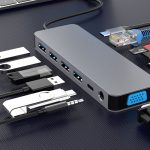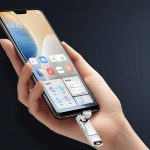Framework has been expanding its footprint in the laptop scene over the last few years, and we felt it was time to give one of their modular laptops a look. This latest generation is good enough that I felt it could be my daily driver, the port swap system is simple enough for a child to use, and if you don’t mind continuing to take part in the company’s ecosystem, you’ve got upgrades for years without having to throw away any more than the bare minimum.
If you’re not familiar with Framework, the company makes laptops and parts with two goals in mind: sustainability and repairability.
The repairability piece is a breath of fresh air to someone like me who has used exclusively Apple laptops for the last 10 years — good devices to be sure, but forget about repairing or upgrading them. Framework’s models are built from the ground up to be fixed, whether that’s swapping out bad RAM, replacing the keyboard, or adding a (new or old) port.
That feeds into the sustainability side, since instead of buying a whole new laptop every few years, you keep the old one and just swap out the piece that needs to go. Less e-waste, less cash waste.
The latest Framework laptop includes the following standard:
- 13.5″ 2256×1504 display (3:2 ratio)
- 55 Wh battery
- 1080p webcam
- Fingerprint reader
- 1.3 kg, 16mm thick
- 3.5mm headphone port
You can specify storage, RAM, and of course processor, from a i5-1240P to a i7-1280P, with onboard graphics.
Out of the box, the laptop is quite ordinary looking — which is a compliment, I feel. The soft grey brushed aluminum (50% recycled) and gear logo are tasteful, and the general shape is inoffensive and familiar, though it lacks the “premium” feel of a MacBook Pro (much of which comes from the MBP’s unibody construction that precludes easy repair).
Open it up and you have the now-familiar black bezel and black keys on silver, the now default style for mid- and high-end laptops.
But you notice right away that above the screen there are little switches next to the camera and microphone. These privacy switches completely remove the device from your system’s awareness — they’re not just covers. It’s the kind of kill switch I’ve always wanted in my devices, and here it is implemented very well.
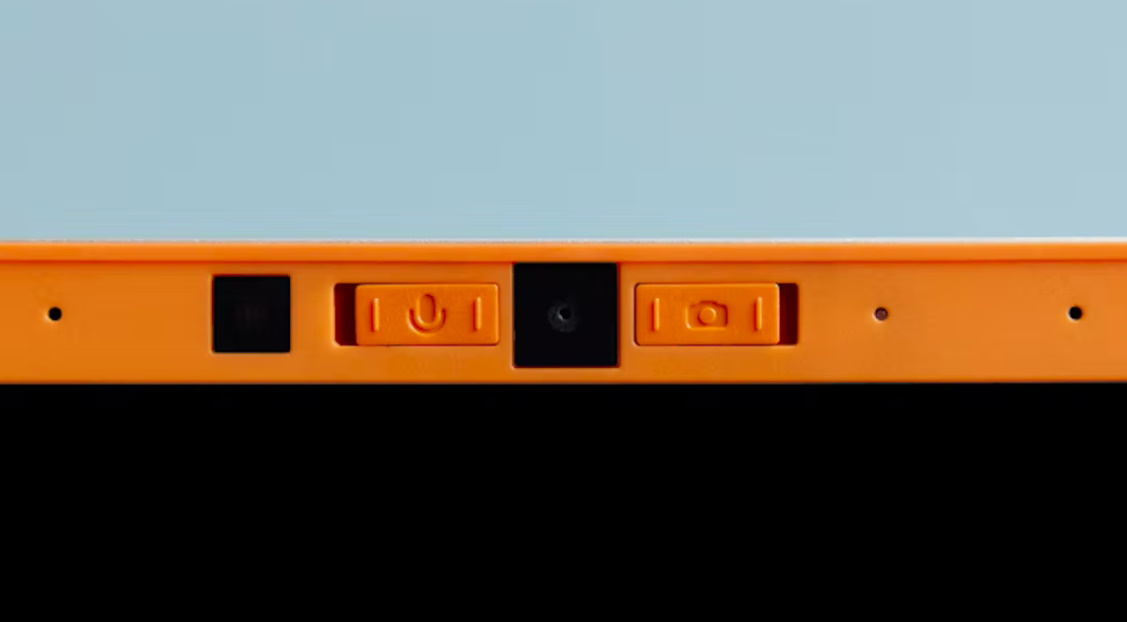
Image Credits: Framework
Switching them on and off actually deregisters them in the OS (in my case, Windows 11), and they pop back up as soon as you click them back on. It’s just like plugging and unplugging a USB peripheral (which is probably more or less how it works inside the box). My only caveat is the switch is a little difficult to snick back and forth, which is probably for the best since it would be annoying to be hitting it on accident all the time.
The rest of the basic laptop items are as expected: the screen is fine, if a rather unusual resolution, and the whole bezel can be swapped out for different colors if you want to fly your freak flag (or just an orange one). The fingerprint reader, which doubles as a power button, worked flawlessly for me.
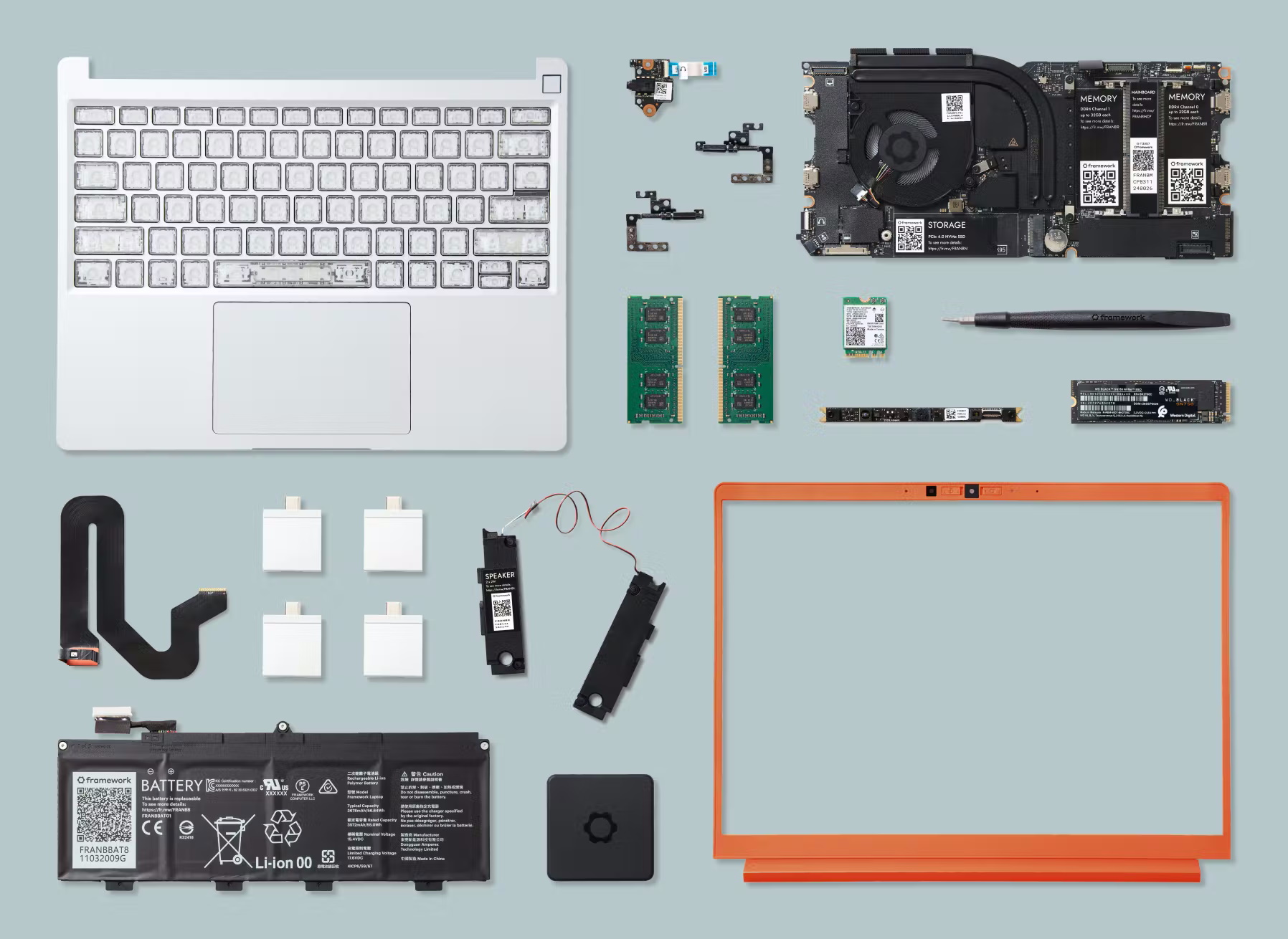
Image Credits: Framework
The keyboard is advertised as having a longer travel distance (1.5mm) than others, and that does feel true, though it’s still a long way from having the tactility of a mechanical or anything like that. It’s a perfectly good laptop keyboard and if you tend to bottom out when you type on shallower ones, this could be a nice upgrade.
I only had one serious hardware problem and that was the power cord. It’s stiff, ugly, and bulky. I would happily sacrifice a port for a custom magnetic power connector or pay extra for a
Hot swappable and cold fixable
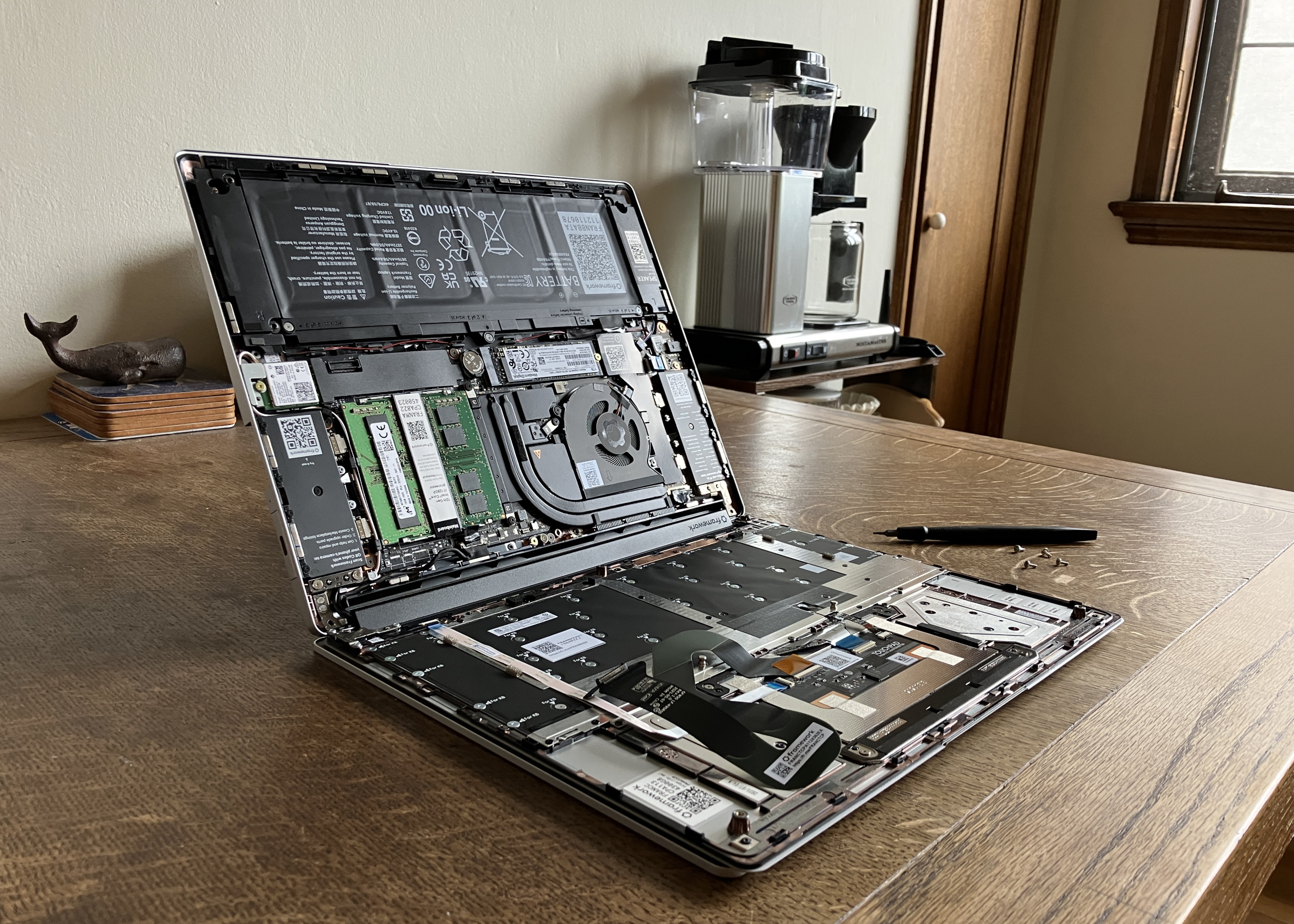
The Framework laptop open to the elements. It’s actually upside-down right now, something I realized after I took the picture. Image Credits: Devin Coldewey / TechCrunch
Where the Framework diverges from the rest is in its hot swappable side ports. When you order the laptop, you also order as many ports as you need, from USB-C to USB-A, Micro SD, Ethernet, HDMI, and removable storage up to a terabyte. The only port the laptop is born with is a 3.5mm headphone adapter.
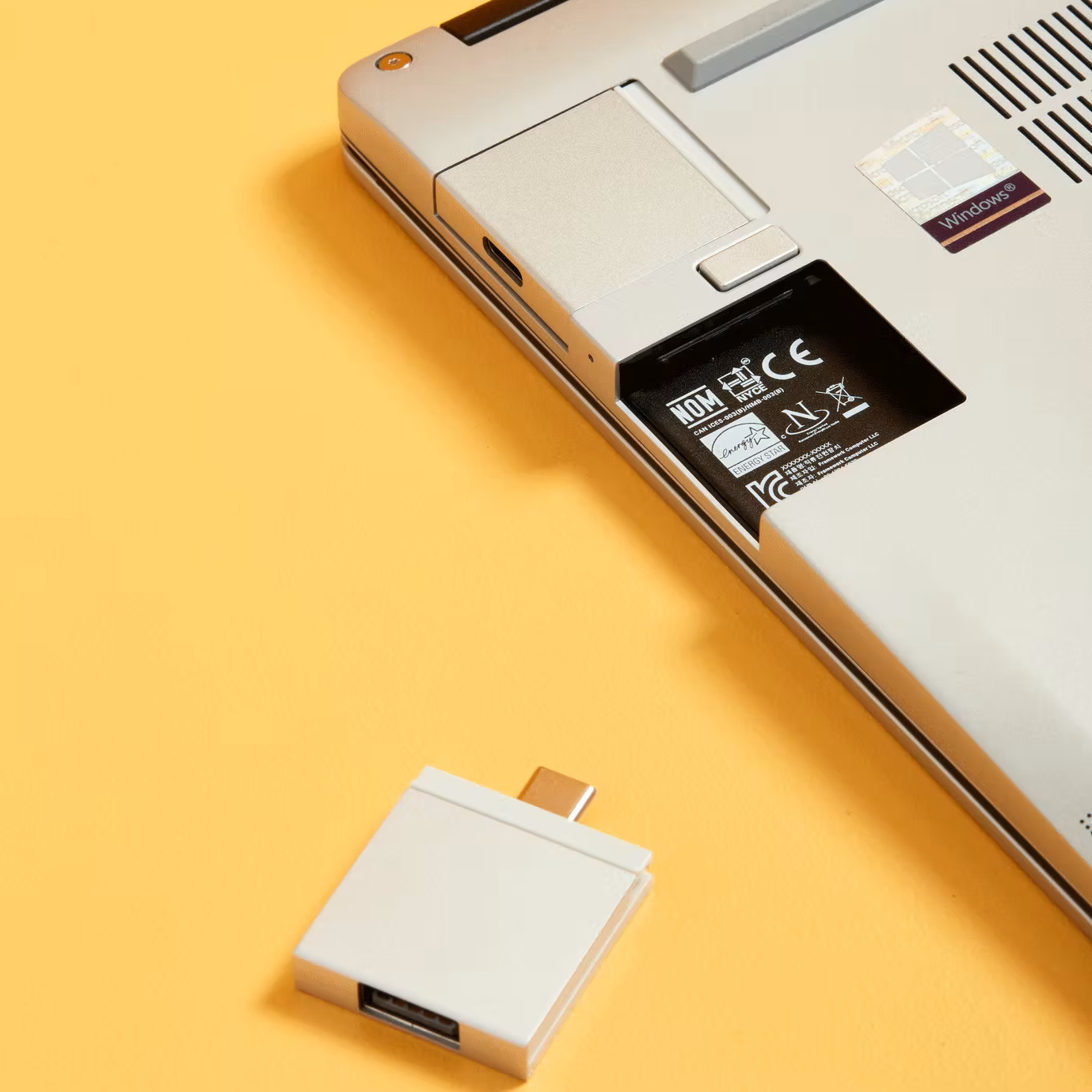
Image Credits: Framework
The little port devices are essentially self-contained USB-C adapters, so they don’t register as extra devices or anything like that (except that they’ll mount as drives in the case of an inserted card or drive, of course). They lock into place quite securely — you may feel too securely, but how often do you need to change them out?
As someone who refused to upgrade my Mac for years because of their port shenanigans, this feels like the best of both worlds. I can plug in the power on the right or left, swap in the Micro SD when I’m doing that sort of thing, and keep the HDMI in for just in case. The flexibility is nice to have, though I would have liked a full size SD one for camera work. Hopefully more are on the way, but they’ve covered the main use cases and of course my existing adapters still work.
When it comes to the internals, it’s a bit different from the usual DIY computing style. When I put together a desktop, I buy an ATX standard motherboard and pick my components from a range of compatible pieces. Non-standard parts tend to be motherboard-specific or for things like dual-GPU setups or liquid cooling.
With the Framework, there’s a mix of standard parts (the internal SSD, for instance) and device-specific ones, like the mainboard and audio module. So if you intend to make this laptop your main for the next five years or so, you have to be OK with the idea of Framework being your primary supplier. That’s not necessarily a bad thing — but some people do value being able to just order a part and swap it in.
The truth is, though, that although the old method of building and maintaining a DIY computer are not completely here, the spirit certainly is. You may not be able to choose between MSI, Asus, and Gigabyte for some parts, but you can still easily replace them, even tweak them to your liking. I think this allows for a happy medium between the fully DIY but buggy and chunky laptops that hardware enthusiasts tend to be stuck with and the sleeker, but barely upgradeable ones that the majority end up with.
Framework isn’t necessarily trying to get people already wild for DIY to go upscale — this is about capturing people who’d like a little more flexibility and reusability but can’t find it in mainstream devices.
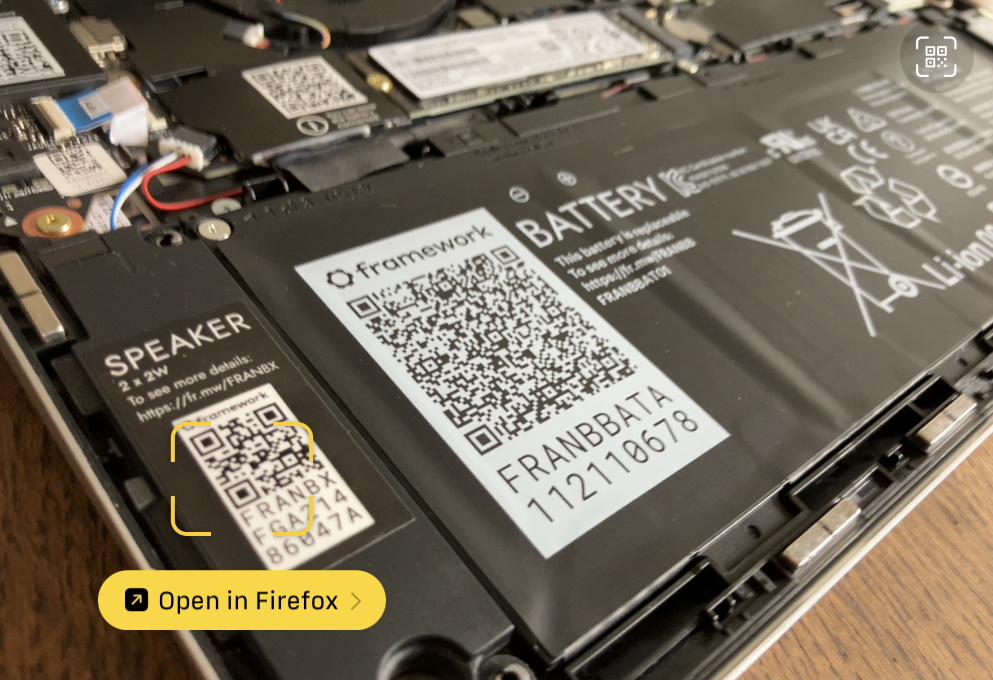
QR code links point you to replacements, instructions, and other info. Image Credits: Devin Coldewey / TechCrunch
From my limited delvings into the internals, I think that anyone comfortable enough to open it will also be fine switching out a piece. It really is close to drop-in and there are instructions baked into the parts, easy enough to look up and follow. All it takes is the included screwdriver, which is also helpfully magnetic:
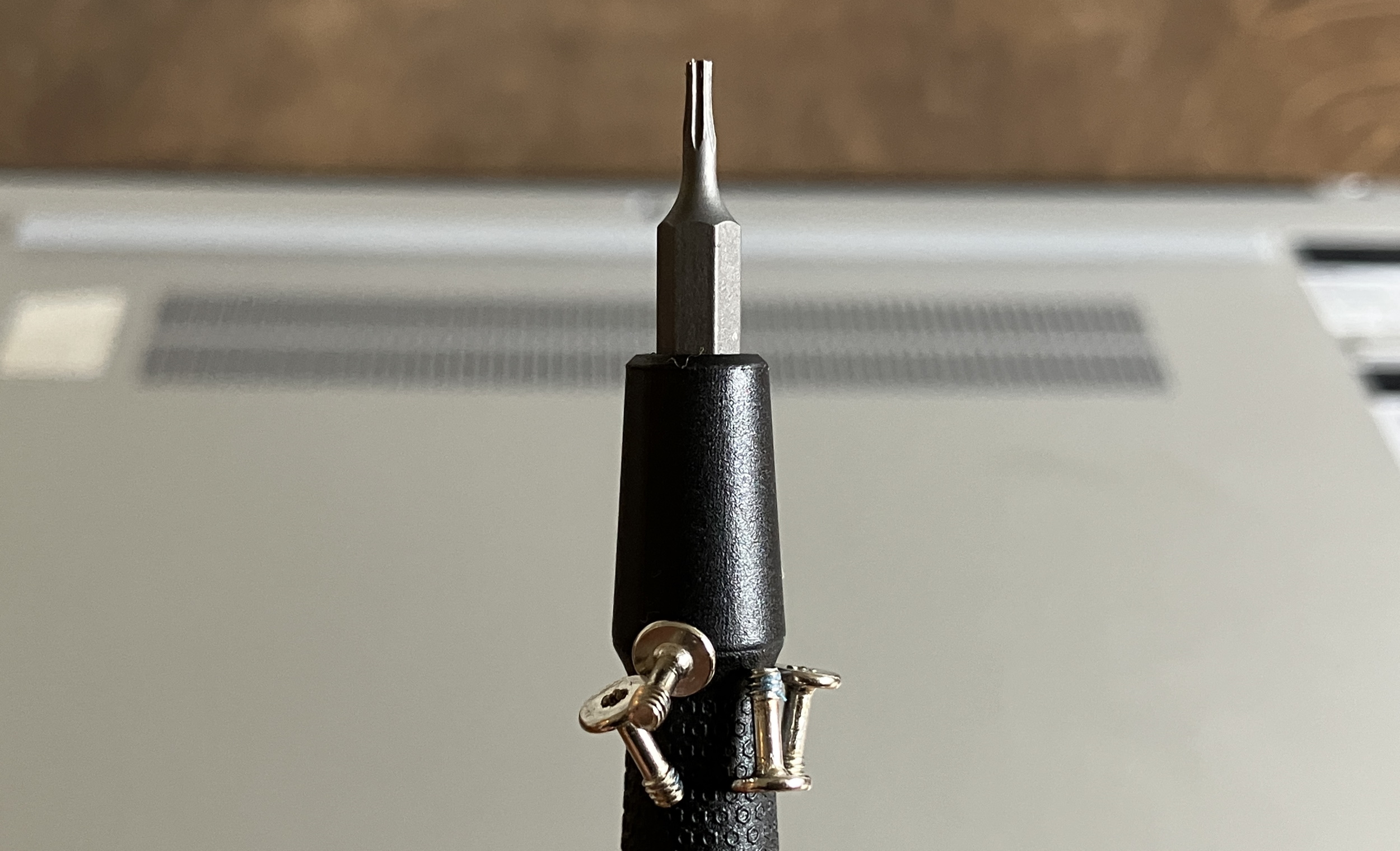
Looks big but isn’t big. Image Credits: Devin Coldewey / TechCrunch
I’ve always shied away from PC laptops because the truth is Apple’s products are in many ways built to last — my old 2012 Air is now running Zorin and loving life. I’m not sure I could do that if I had a 2012 Acer (though as usual, it’s not the years, it’s the mileage).
But the Framework suggests to me that there’s a real reason to switch to their approach (though it sure isn’t Windows 11, which the review device shipped with, though you can select others). Attempting to be a little more ethical about gadget buying is a good thing, but I also just like the idea of buying something that will actually last 5-10 years, and not just become more and more obsolete.
At $819 for the lowest configuration, it’s not the cheapest laptop on the market, and you could almost certainly find one with better specs for a similar price if you looked. But if you think about that money (and another $50-100 for ports, etc) as the beginning of an investment, and one that will prevent you from having to buy another computer 3-4 years from now, it starts to make more sense. Plus you’re supporting a company that’s doing more than talk in service of the right to repair and reducing e-waste.
If I was in the market for a non-Mac laptop, Framework would be my first stop. I hope that in the future they’ll offer more models, and other options for customization to lower the cost or accommodate specialty builds.
Powered by WPeMatico


